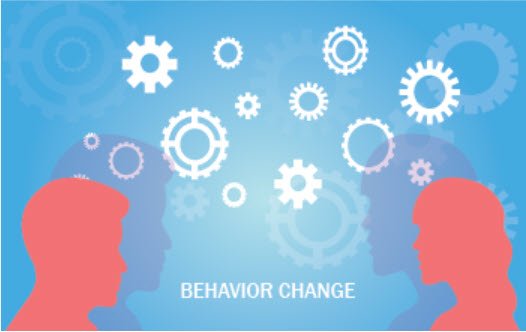
Behavior change interventions frequently fail primarily due to poor user engagement. While psychological theories and behavior change techniques may demonstrate efficacy in controlled conditions and with committed participants, their effectiveness in the real world is undermined if users do not engage with them as intended. Behavior interventions frequently face challenges with people not starting the intervention or dropping out very soon after starting. Even if users initially engage, they often fail to maintain long-term adherence to the techniques intended to support behavior change.
According to Yardley et. al. (2020), the primary reasons why engagement with behavioral change interventions fail are as follows:
|
Reason |
Description |
|
Poor Design and Inadequate |
Interventions can be unappealing, unpersuasive, or difficult to put into practice. Developers often underestimate the time and effort needed to optimize interventions and may take shortcuts, such as consulting a small, unrepresentative sample of users. This leads to interventions that fail, underperform, or are only engaging for a small proportion of potential users. |
|
Lack of User-Centric Design |
The key to maximizing engagement is to listen to and |
|
Insufficient Tailoring and |
If interventions do not take into account the diverse characteristics of individuals (e.g., demographics, motivations, starting points, environmental contexts), they may fail to be |
|
Failure to Support Sustained |
For behaviors requiring regular repetition over time (e.g., weight management), interventions that do not fit with users’ usual routines or existing physical and social environments are less likely to be sustained. Integrating interventions into existing social and organizational structures (e.g., family, workplace, healthcare system) is crucial for long-term use and scalability. |
The authors further argue that many behavioral change theories were developed and tested in controlled conditions with samples that were more educated and committed than the general population (e.g., laboratory studies of students, or motivated/paid volunteers). This makes their direct application to wider, diverse populations challenging, as these techniques will only be effective if users engage with them as intended in real-world settings.
To counter failed behavior change interventions, change agents can implement a comprehensive approach focused on understanding and engaging the target users, beginning by designing and optimizing interventions for accessibility and engagement. Interventions must be made easy and enjoyable to engage with, motivating, and practical for all target users.
Also important is the need to conduct a needs assessment and characterize users. This early step is crucial to identify what an intervention must include to overcome barriers to engagement. It helps in selecting acceptable, salient, and feasible theory- and evidence-based intervention techniques. It also helps avoid off-putting or unnecessary techniques and can even suggest new features. It also helps avoid off-putting or unnecessary techniques and can even suggest new features. It’s important to understand users’ demographic characteristics, current behavior, beliefs and feelings about targeted behaviors, needs, capabilities, preferences, social identities and context, and environmental barriers and facilitators.
Change agents must tailor and target their Interventions. Tailoring involves delivering information, support, and advice relevant to individual users based on their specific characteristics, such as demographics, motivations, starting points, or environmental contexts. This improves personal relevance and prevents users from encountering off-putting or harmful information. A potential solution if users feel they haven’t provided enough accurate information for tailoring is to allow self-tailoring, where users choose what information or tools are most relevant to them.
Targeting refers to designing the whole intervention for a specific group or population. Adaptation may be necessary for different user groups. To promote trust and credibility, it’s helpful to provide details about the development team (including target population members), reassure users about data usage, minimize reading burden, use audiovisual formats, and employ simple, nonjudgmental language.
Change agents should also optimize interventions using qualitative and quantitative methods. This is an iterative process to ensure the intervention is acceptable, feasible, persuasive, enjoyable, motivating, and engaging. Qualitative methods provide detailed feedback and insights into potential and unexpected barriers to behavior change. Quantitative methods provide data on user characteristics, reactions to content, usage patterns, and the application of behavior change techniques. Combining this data with qualitative insights helps adjust interventions to maximize future engagement.
Social support from colleagues and change professionals can help users sustain behavior changes. Social influence approaches, such as influential people demonstrating behavior or making public commitments, can also be effective. Adding social support, especially in digital interventions, can increase engagement and effectiveness, with remote support being a cost-effective option.
For repeated behaviors, interventions should be designed to fit with users’ usual routines and existing physical and social environments. Integrating interventions into existing social and organizational structures makes them more likely to be used and scaled. Advancing technology allows for “just-in-time adaptive interventions,” delivering tailored information and advice at optimal moments by sensing habitual behavior or environmental cues.
Engaging stakeholders, including intervention providers, from early development stages through “stakeholder co-design” helps ensure that existing systems are appropriately harnessed for real-world implementation and sustainability. It also allows for quick feedback from diverse perspectives. Collecting data on uptake, usage, and outcomes in real-world implementation for continuous quality improvement can efficiently optimize interventions, similar to how digital platforms continuously improve engagement.
Ultimately, the key to maximizing engagement and countering failed interventions is to listen to and understand the target users of the intervention and address their needs, concerns, and preferences. Underestimating the time and effort needed for optimization or only consulting small, atypical samples can lead to interventions that fail or are only effective for a small proportion of potential users. The described methods can be adapted flexibly to anticipate and overcome engagement barriers, maximizing uptake and effectiveness of behavior change interventions.
Sources:
Yardley, L., Morrison, L., Muller, I., & Bradbury, K. (2020). “Maximizing User Engagement with Behavior Change Interventions”. In Hagger, M. (Ed.), The Handbook of Behavior Change (pp. 361-371), Cambridge University Press.
